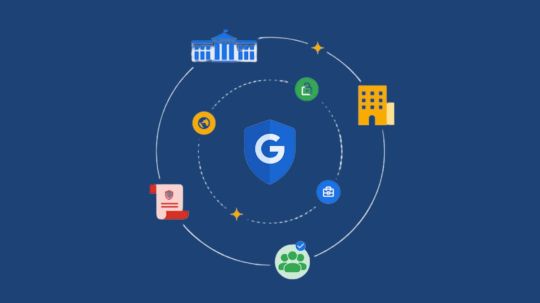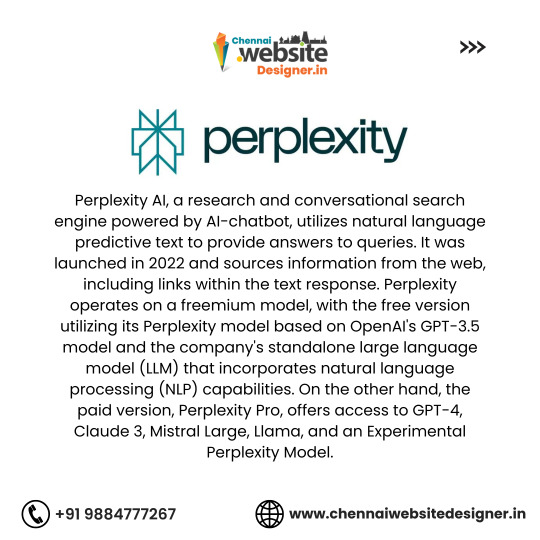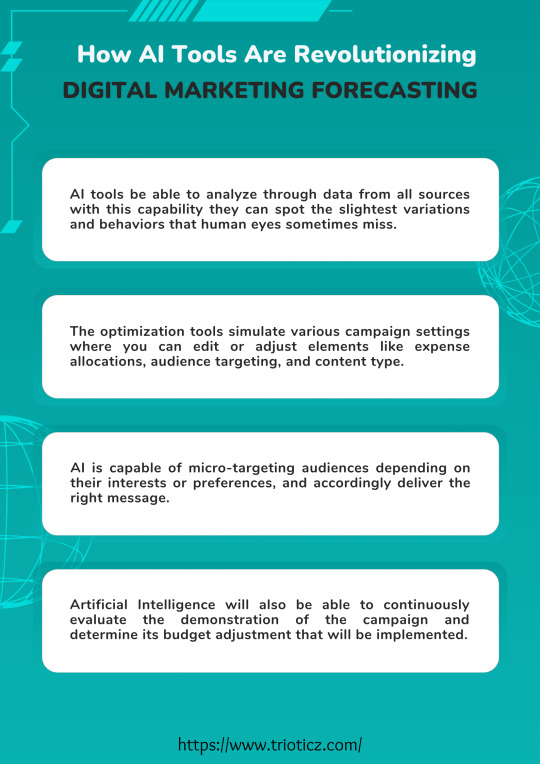#aicapabilities
Explore tagged Tumblr posts
Text

OpenAI CEO Sam Altman Calls for Nuanced Approach to AI Safety Amidst Research Halt Debate
In a recent blog post, we discussed OpenAI CEO Sam Altman's response to an open letter from the Future of Life Institute signed by tech leaders like Tesla CEO Elon Musk and Apple co-founder Steve Wozniak, calling for a six-month AI research halt. While Altman agreed with certain aspects of the letter, he argued that it lacked technical nuance about where the pause was necessary.
During an MIT event on business and AI, Altman emphasized the importance of caution and rigor in addressing safety issues but felt that the letter wasn't the optimal approach. The open letter had gained significant attention, with over 25,000 signatures, urging AI labs and independent experts to develop and implement shared safety protocols for advanced AI systems.
OpenAI, the creator of the widely-discussed AI bot ChatGPT, has garnered international attention and prompted a surge in AI investment. Its GPT technology is used in Microsoft's Bing AI chatbot, and Google has launched its competitor, Bard. Altman acknowledged that as AI capabilities become more powerful, the safety bar must be raised.
Concerns about safe and ethical AI use have reached the White House and various international forums, reflecting the growing importance of the topic. Despite not currently developing GPT-5, OpenAI is enhancing GPT-4's capabilities and addressing safety implications. Altman's remarks serve as a reminder that it is crucial to focus on the capabilities of AI systems and how they might evolve over time, rather than getting caught up in version numbers.
Altman's insights emphasize the need for a more nuanced approach to AI safety and the importance of addressing the capabilities of current systems like GPT-4. As the debate around AI safety continues, it's crucial for the industry to prioritize developing shared safety protocols and ethical guidelines for AI design and development.
In the ongoing conversation about the potential risks associated with AI systems, Sam Altman, CEO and co-founder of OpenAI, clarified that they are not presently developing GPT-5, the expected successor to their AI language model GPT-4, which debuted in March.
During an MIT event, Altman responded to a widely shared open letter urging AI labs, including OpenAI, to halt progress on AI systems more potent than GPT-4. Though the letter highlighted safety concerns, it faced criticism from numerous industry insiders, even some who signed it. The AI community remains uncertain about the true nature of AI risks and how development can be paused effectively.
At the event, Altman noted that the letter lacked technical insight on where to pause development and pointed out that a previous version inaccurately claimed OpenAI was working on GPT-5. He clarified, "We are not and won't for some time," dismissing the assumption as "sort of silly."
Despite not working on GPT-5, Altman emphasized that OpenAI is enhancing GPT-4's capabilities while carefully considering the safety implications. "We are doing other things on top of GPT-4 that I think have all sorts of safety issues that are important to address and were totally left out of the letter," he said.
The AI safety debate's fixation on version numbers, like GPT-5, can overshadow more pressing concerns: the capabilities of these systems. It's vital to scrutinize what these systems can and cannot achieve and how this might change over time.
Altman's assurance that OpenAI isn't developing GPT-5 may not comfort those worried about AI safety. The company continues to expand GPT-4's potential (e.g., by connecting it to the internet) while other industry players develop similarly ambitious tools. OpenAI will also likely optimize GPT-4 further, possibly releasing intermediate versions like GPT-4.5.
Sam Altman's insights provide an essential reminder that the focus should be on capabilities rather than version numbers. His pragmatic approach highlights the importance of addressing safety concerns with current systems like GPT-4, rather than fixating on hypothetical future iterations like GPT-5.
Ultimately, even if a global ban on new AI developments were possible, society still faces significant challenges in understanding and managing the effects of currently available systems. GPT-5 may not be in the pipeline, but the world has much to uncover about GPT-4 and its potential consequences.
ChatGPT 4 and ChatGPT 3.5 are both advanced AI language models developed by OpenAI, but there are several key differences in their features and capabilities.
One of the main differences between ChatGPT 4 and ChatGPT 3.5 is the size of their training data sets. ChatGPT 4 has been trained on a much larger dataset than its predecessor, allowing it to generate more accurate and contextually relevant responses. This larger dataset also means that ChatGPT 4 has a greater understanding of natural language and can respond to a wider range of inputs.
In addition to its larger dataset, ChatGPT 4 also includes several new features that were not present in ChatGPT 3.5. One notable feature is the ability to perform multi-turn conversations, where the AI can remember previous interactions and use that information to generate more accurate and personalized responses. ChatGPT 4 also includes an improved understanding of context and the ability to generate more diverse and creative responses.
Another difference between ChatGPT 4 and ChatGPT 3.5 is their computational requirements. Due to its larger dataset and more complex architecture, ChatGPT 4 requires significantly more computational power than ChatGPT 3.5. This means that ChatGPT 4 may not be as accessible to smaller organizations or individuals who do not have access to powerful computing resources.
Overall, while ChatGPT 4 and ChatGPT 3.5 share many similarities, the improvements made to ChatGPT 4's architecture and features have resulted in a more powerful and versatile language model.
As an AI language model, ChatGPT is constantly evolving and improving with each new iteration. While there is no official announcement about the development of ChatGPT 5, it is possible to speculate about some potential features and improvements that it could include. One possibility is that ChatGPT 5 could be even larger than its predecessors, with an even larger dataset and more complex architecture. This would allow for even more accurate and contextually relevant responses. Additionally, ChatGPT 5 could potentially include new features such as the ability to generate more visually descriptive responses or even produce multi-modal responses that incorporate text, images, and other media. Another possibility is that ChatGPT 5 could include new capabilities related to natural language understanding, such as a better understanding of idioms, slang, and other nuances of language. Ultimately, the exact features of ChatGPT 5 will depend on the specific research and development goals of the team at OpenAI, but it is likely to continue pushing the boundaries of what is possible with AI language models.
About Mark Matos
Mark Matos Blog
2 notes
·
View notes
Text
Google Secure AI Framework: Improving AI Security And Trust

Google Secure AI Framework
A conceptual framework for cooperatively securing AI technologies is being released by Google.
AI has enormous promise, particularly generative AI. However, in order to develop and implement this technology responsibly, there must be clear industry security standards in place as it moves forward in these new areas of innovation. The Secure AI Framework (SAIF), a conceptual framework for secure AI systems.
Why SAIF is being introduced
Incorporating Google’s knowledge of security mega-trends and hazards unique to AI systems, Secure AI Framework draws inspiration from the security best practices it has implemented in software development, such as evaluating, testing, and managing the supply chain.
In order to ensure that responsible actors protect the technology that underpins AI developments and that AI models are secure by default when they are implemented, a framework spanning the public and private sectors is necessary.
At Google, they adopted a transparent and cooperative approach to cybersecurity over the years. To assist respond to and prevent cyberattacks, this entails fusing frontline intelligence, experience, and creativity with a dedication to sharing threat information with others. Building on that methodology, Secure AI Framework is intended to assist in reducing threats unique to AI systems, such as model theft, data poisoning of training data, quick injection of harmful inputs, and extraction of private information from training data. Following a bold and responsible framework will be even more important as AI capabilities are used in products worldwide.
Let’s now examine Secure AI Framework and its six fundamental components:
1. Provide the AI ecosystem with more robust security foundations
To safeguard AI systems, apps, and users, this involves utilizing secure-by-default infrastructure safeguards and knowledge accumulated over the previous 20 years. Develop organizational knowledge to stay up with AI developments while beginning to expand and modify infrastructure defenses in light of changing threat models and AI. For instance, companies can implement mitigations like input sanitization and limiting to assist better defend against prompt injection style attacks. Injection techniques like SQL injection have been around for a while.
2. Expand detection and response to include AI in the threat landscape of an organization
When it comes to identifying and handling AI-related cyber incidents, promptness is essential, and giving an organization access to threat intelligence and other capabilities enhances both. This involves employing threat intelligence to foresee assaults and keeping an eye on the inputs and outputs of generative AI systems to identify irregularities for companies. Usually, cooperation with threat intelligence, counter-abuse, and trust and safety teams is needed for this endeavor.
3. Automate defenses to stay ahead of both new and current threats
The scope and velocity of security incident response activities can be enhanced by the most recent advancements in AI. It’s critical to employ AI and its existing and developing capabilities to stay agile and economically viable when defending against adversaries, who will probably use them to scale their influence.
4. Align platform-level rules to provide uniform security throughout the company
To guarantee that all AI applications have access to the finest protections in a scalable and economical way, control framework consistency can help mitigate AI risk and scale protections across various platforms and technologies. At Google, this entails incorporating controls and safeguards into the software development lifecycle and expanding secure-by-default safeguards to AI platforms such as Vertex AI and Security AI Workbench. The firm as a whole can gain from state-of-the-art security by utilizing capabilities that cater to common use cases, such as Perspective API.
5.Adjust parameters to mitigate and speed up AI deployment feedback loops
Continuous learning and testing of implementations can guarantee that detection and prevention capabilities adapt to the ever-changing threat landscape. In addition to methods like updating training data sets, adjusting models to react strategically to attacks, and enabling the software used to create models to incorporate additional security in context (e.g. detecting anomalous behavior), this also includes techniques like reinforcement learning based on incidents and user feedback. To increase safety assurance for AI-powered products and capabilities, organizations can also regularly perform red team exercises.
6. Put the hazards of AI systems in the context of related business procedures
Last but not least, completing end-to-end risk assessments on an organization’s AI deployment can aid in decision-making. An evaluation of the overall business risk is part of this, as are data lineage, validation, and operational behavior monitoring for specific application types. Companies should also create automated tests to verify AI’s performance.
Why we are in favor of a safe AI community for everybody
To lower total risk and increase the standard for security, it has long supported and frequently created industry guidelines. Its groundbreaking work on its BeyondCorp access model produced the zero trust principles that are now industry standard, and it has partnered with others to introduce the Supply-chain Levels for Software Artifacts (SLSA) framework to enhance software supply chain integrity. These and other initiatives taught us that creating a community to support and further the work is essential to long-term success.
How Google is implementing Secure AI Framework
Five actions have already been taken to promote and develop a framework that benefits everyone.
With the announcement of important partners and contributors in the upcoming months and ongoing industry involvement to support the development of the NIST AI Risk Management Framework and ISO/IEC 42001 AI Management System Standard (the first AI certification standard in the industry), Secure AI Framework is fostering industry support. These standards are in line with SAIF elements and mainly rely on the security principles included in the NIST Cybersecurity Framework and ISO/IEC 27001 Security Management System, in which Google will be taking part to make sure upcoming improvements are appropriate to cutting-edge technologies like artificial intelligence.
Assisting businesses, including clients and governments, in understanding how to evaluate and reduce the risks associated with AI security. This entails holding workshops with professionals and keeping up with the latest publications on safe AI system deployment best practices.
Sharing information about cyber activities involving AI systems from Google’s top threat intelligence teams, such as Mandiant and TAG.
Extending existing bug hunters initiatives, such as Google Vulnerability Rewards Program, to encourage and reward AI security and safety research.
With partners like GitLab and Cohesity, it will keep providing secure AI solutions while expanding its skills to assist clients in creating safe systems.
Read more on Govindhtech.com
#generativeAI#AIFramework#SecureAIFramework#AItechnologies#AImodels#AIcapabilities#AIapplications#VertexAI#NISTCybersecurity#News#Technews#Technology#technologynews#technologytrends#govindhtech
0 notes
Text
Discover the World of Artificial Intelligence 🤖 | Explore AI Through Real-Life Scenarios | Are Machines Capable of Thinking? #ArtificialIntelligence #AICapabilities #TechRevolution
https://readr.me/9gz7cs
0 notes
Text
#ATS#RecruitmentTech#AICapabilities#TalentAcquisition#HiringSolutions#AIRecruitment#FutureOfRecruitment#RecruitmentTrends#HRInnovation
0 notes
Text
instagram
The "Reverse Turing Test Experiment with AIs in VR" by Tamulur is a fascinating concept where the roles of humans and AIs are reversed. In this experiment, a group of advanced AIs tries to identify which among them is a human. This is conducted in a virtual reality setting, making it a unique and immersive experience. The idea challenges traditional Turing Test principles, where typically, humans try to distinguish between human and AI responses. This experiment flips the script, allowing AIs to take on the detective role, showcasing advancements in AI capabilities and interaction.
For more AI related updates, follow @trillionstech.ai
0 notes
Text
** The New AI Model Talks, Reads & Sees! Check Out GPT-4o!**

Amazonliss Hair Care
Disclosure: This post may contain affiliate links. By clicking on a link and making a purchase, I may earn a commission at no additional cost to you.
0 notes
Text

Introducing Perplexity AI, the latest competitor to ChatGPT! 🚀 With its advanced algorithms and natural language processing capabilities, Perplexity AI is set to revolutionize the world of conversational AI. Get ready for a new era of interactive and intelligent chatbots! . . . . . Follow for More: @chennaiwebsitedesigner
#perplexityai#AICompetition#AI#perplexity#predictions#AIrevolution#conversationalAI#advancedalgorithms#naturallanguageprocessing#intelligentchatbots#interactiveAI#newera#technologyinnovation#AIcompetition#cuttingedge#revolutionarytech#innovativeAI#chatbotdevelopment#AIcapabilities#futuretech#AIprogress#AIdevelopment#nextgenerationAI
1 note
·
View note
Text
How AI Tools Are Revolutionizing Digital Marketing Forecasting

How AI tools are reshaping digital marketing forecasting and strategies. Explore the future today!
If you are thinking of developing your website according to search engine optimization principles to get organic traffic, then working with a Best SEO Company in Coimbatore would be a valuable consideration.
#AIcapabilities#AIToolsinDigitalMarketing#BestSEOCompanyinCoimbatore#BudgetAllocation#DigitalMarketingForecasting#Personalization#sem#socialmediaengagements#userbehavior
0 notes
Text
Creating an Effective Corporate Use Policy for Generative AI: Best Practices
In today’s digital era, generative artificial intelligence (AI) technologies have revolutionized the way businesses operate. AI-powered solutions have the ability to streamline processes and improve productivity across the board, from content development to customer support. With enormous power, however, comes great responsibility. It is critical to build a detailed corporate use strategy to ensure the ethical and responsible use of generative AI within your organization. In this blog post, we will discuss the best practices for creating a robust policy and provide a call to action on behalf of Shariwaa, an AI solution provider dedicated to ethical AI use.
1. Understand the Capabilities and Risks: Understanding the capabilities and hazards of generative AI is critical before defining a corporate use policy. This knowledge will allow you to set reasonable expectations and put necessary safeguards in place. Learn about the technology, its limitations, potential biases, and the impact on data privacy and security.
2. Define Acceptable Use Cases: Identify the precise scenarios and use cases in your organisation where generative AI will be used. Determine the areas where AI may bring value and help you achieve your company goals. Outline the goals for which generative AI will be employed, such as content development, data analysis, or decision-making assistance.
3. Establish Data Governance Framework:
Develop a robust data governance framework to ensure that generative AI systems are trained on high-quality, diverse, and representative datasets. By specifying criteria for data collection, storage, access, and anonymization, you can emphasize the importance of data privacy and security. Implement methods for getting consent and adhering to applicable data protection rules.
4. Consider Ethical Considerations: Recognise the ethical implications of generative AI. Establish policies that prioritise equity, openness, and accountability. Consider issues such as bias reduction, explainability, and potential social influence. Encourage responsible AI practices that are consistent with ethical values, such as ensuring that AI systems do not discriminate against or hurt persons or communities.
5. Provide Employee Training and Awareness:
Educate your personnel on generative AI as well as the policies and procedures that govern its use. Provide training programmes to help them better grasp AI technology, its potential, and the hazards that come with it. Foster a culture of ethical AI usage by increasing policy awareness and encouraging staff to report any potential issues or concerns.
6. Implement Mechanisms for Monitoring and Auditing:
Create procedures to oversee and audit your organization’s use of generative AI systems. Evaluate system performance, data quality, and policy adherence on a regular basis. Conduct regular audits to detect any discrepancies or potential ethical issues. Encourage user and stakeholder feedback in order to continuously improve the policy and its execution.
7. Collaborate with Industry Standards and External Experts:
Keep up to date on generative AI industry best practice’s, guidelines, and emerging laws. Engage with outside experts, academics, and organizations focused on AI ethics and responsible AI development. Participate actively in relevant industry activities and utilize existing frameworks to ensure that your business use policy is up to date.
Shariwaa is dedicated to the development and promotion of responsible AI technology use. As a major provider of AI solutions, we realise the importance of ethical issues and the necessity for thorough policies. If your organization is looking for guidance in developing a corporate use policy for generative AI or seeking AI solutions that prioritize responsible AI practices, we invite you to connect with us. Let us work together to create a future in which AI benefits society.
#shariwaa#artficialintelligence#AIethics#ResponsibleAI#AIcapabilities#RiskAssessment#BusinessObjectives#DataGovernance
0 notes
Text
AICAP, WHERE WERE YOU ...

WHEN JEWISH RUSSIAN SPEAKING CORRUPT UKRAINIAN MILLIONAIRE ACT(OR)ING CLOWN NAZI(zionist) ZELENSKY WAS MADE PRESIDENT ON A LIE FOR PEACE.

WHERE DOES HE STAND NOW or IS HE ONE OF YOUR OWN AICAP?
youtube
(732VID1) https://youtu.be/iK-XtEXsNuE
WHAT'S GOING ON???

NO!!!! MAYBE??? I DON'T KNOW?!?!?!
I SWEAR ON AICAP ...

youtube
REF: 733
0 notes
Photo

Aikatsu on Parade! - Episode 24
#aikatsu#aikatsu on parade#aikatsu friends#shirayuri kaguya#shirayuri sakuya#reflect moon#aipare#aipare24#aicaps#aipans#aikatsu blogging#othpans#pans
81 notes
·
View notes
Text
Apple M4 Max Chip: Apple’s Plan for Better Graphics And AI

Apple M4 Max rumors
Apple M4 Max
With the expected release of the Mac M4 Max CPU, Apple is expected to meet high expectations once again, as its chip designs have led the computer sector. Following the success of the M1, M2, and M3 processors, it is projected to boost performance with a quantum leap in computing power and power efficiency. This article discusses the Mac Max M4 chip’s release date, key specs, leaked features, and price.
M4 Max release date
Though industry speculations indicate the M4 Max chip could come in the second half of 2024, Apple has not officially confirmed a release date. Along with updated MacBook Pro models or other high-performance Macs, Apple has traditionally announced new chipsets during their fall hardware launches. In October or November of 2024, the M4 Max might make its debut in tandem with the release of new MacBook Pro models if the current trend holds true.
Mac M4 Max Important Features
Improving Output
Recent advances in Apple’s 3-nanometer (nm) manufacturing technology could boost M4 Max CPU and GPU performance over the M3 Max. Video editing, 3D rendering, and AI processing may benefit from additional CPU and GPU cores for multi-threaded performance.
Enhanced Production
With less heat and power consumption without compromising performance, it is expected to further increase power efficiency. Professionals that depend on extended battery life while performing taxing work while on the go should take note of this.
The Architecture of Unified Memory
It is anticipated to enhance Apple’s Unified Memory Architecture (UMA) even more. Speedier and more effective processing is achieved using UMA, which enables the CPU, GPU, and other components to share a memory pool. A whopping 128GB of unified memory might be made available by the M4 Max, offering enormous bandwidth for memory-intensive apps like machine learning and video editing.
Highly Developed Graphics
Anticipated is a better GPU possibly with 48 GPU cores for the M4 Max, which will make it perfect for applications that require advanced graphics. Apple’s internal graphics performance could be surpassed by the M4 Max, whether it is used for gaming, 3D modeling, or high-definition video editing.
Estimates of Price
Starting at approximately $3,499 is the 14-inch MacBook Pro (M4 Max).
Beginning at about $3,999 is the MacBook Pro 16-inch (M4 Max).
RAM and storage choices may cause these costs to change; fully loaded machines may cost more than $5,000.
What Kind of Devices to Expect
The 14-inch and 16-inch MacBook Pro models, as well as the most expensive Mac Studio configurations and, should Apple decide to bring back the iMac Pro, the top-of-the-line models of the MacBook Pro portfolio, are anticipated to run on the M4 Max CPU. For customers who require tremendous processing capacity for jobs like video editing, 3D rendering, and machine learning, the M4 Max is probably going to be the preferred processor for creative professionals.
M4 Max chip
Market Competition for Chips
AMD’s potent Ryzen chips and Intel’s most recent Alder Lake and Meteor Lake processors will compete with Apple’s silicon when it enters a market that is becoming more and more controlled by it. But Apple’s competitive edge still lies in the way its software and hardware are tightly integrated, guaranteeing that Macs with this processors will continue to top performance lists among developers and creative people.
To sum up
It is ready to push the limits of what Apple silicon is capable of, providing consumers with increased efficiency, better performance, and enhanced AI capabilities. Based on Apple’s past performance with its M-series CPUs, the M4 Max is expected to be a powerful tool for professionals that need the best possible performance from their Mac computers, even though the release date, features, and price are still unknown.
Read more on Govindhtech.com
#M4Max#AppleM4Max#M3processors#MacBookPro#MacBookPromodels#AIcapabilities#AMD#News#technews#technology#technologynews#technologytrends#govindhtech
1 note
·
View note
Text
Nhận định bóng đá U23 Ai Cập vs U23 Tây Ban Nha (14h30 ngày 22/7): Tham vọng của La Roja. Cùng https://bong889999.com/ tham gia dự đoán tỉ số chính xác
0 notes
Text
https://youtu.be/AIcaPE-qgX8
youtube
i feel like im still half asleep watching this fksldjsld
1 note
·
View note
Text
A Comprehensive Guide to the Becker CPA Review
The CPA is one of the toughest exams to crack in the Finance and Accounting field and without customized study materials, it is very difficult to pass the exam. While there are many courses that you can choose from, there is none better than the Becker CPA Review. This course has set benchmarks in the quality of course materials for study materials for the CPA exam and the big 4 in accounting and government agencies recommend this course to their accountants who want to become a CPA for further career growth.
This post will take you through the various facets of the course, its strength and weaknesses, and the various types of programs available with their details and prices.
So, let’s dive straight in.

Strengths and Weaknesses of the Becker CPA Review
Comparatively, the strengths of this CPA Review far outnumber the weaknesses which are quite negligible.
Strengths of the Becker CPA Review
The study materials span 150 hours and are created by CPAs and specialized exam experts of CPA. The course is therefore of the highest standard.
The Becker Review follows the AICAP blueprint and hence it replicates the real exam scenario.
The course offers more than 400 task-based practice simulations, thereby thoroughly preparing candidates for the exam.
All multiple-choice questions and simulations have video explanations detailing why a specific answer is right and the others are wrong.
The Becker CPA Review has a mobile app where candidates can study both offline and online from anywhere anytime while on the go. This app has all the features of the website and is very comprehensive.
Weaknesses of the Becker CPA Review
Becker does not offer any audio lessons that candidates can listen to like a podcast on the move.
The Becker CPA Review is the most expensive among all competitors with the base package available at $2000+.
With the strengths and the weaknesses out of the way, let’s check the various packages provided by the Review.
Packages Provided by the Becker CPA Review
This CPA Review offers three packages ranging from the basic one to the feature-rich Pro+ one.
Advantage Course
This is the starter pack of the course, have fewer practice questions than the other two, and no live classes. Priced at $2400, it is primarily an essentials pack but still good enough to help you pass the exam.
Premium Course
It has all the contents of the Advantage course but with more practice questions, live online classes, and unlimited access. This is considered to be the standard course of the Becker CPA Review and with a price tag of $3000, it is the most expensive among others in this class.
Pro+ Course
At $3800, this package offers live in-person classes at select centers, printed flashcards, and free CPE for a year.
Choose the Becker CPA Review if you want to crack the exam the first time around.
0 notes
Link
0 notes